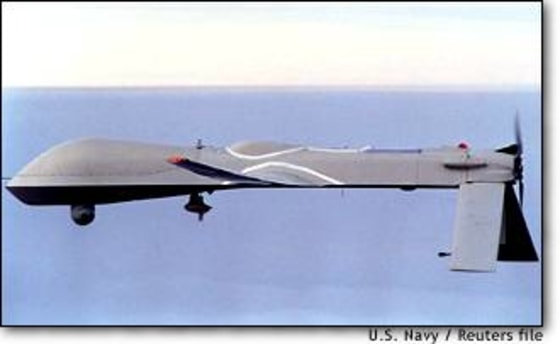The military’s need to fly over enemy territory without risking a pilot’s life led to the deployment of unmanned aerial vehicles called Predator drones. These remotely controlled aircraft are effective in areas contaminated with biological and chemical weapons, moderate risk areas, unsecured air space, or open ocean environments.
The Predator system was initially designed to provide intelligence, surveillance, and reconnaissance to U.S. strategic and tactical forces. In Afghanistan, its was also used as an attack aircraft.
A CIA-controlled Predator firing a Hellfire missile was used to kill six suspected al-Qaida terrorists in Yemen on Nov. 3, 2002
However, the absence of human eyes identifying targets is an area of concern in its use as an attack aircraft.
“Predator drones don’t know whether a bus has terrified children in it or terrorists cadre,” says Dr. Patrick Hatcher, a retired army colonel, who teaches U.S. military history at the University of San Francisco Center for the Pacific Rim.
“Their biggest disadvantage is the risk of error in identifying the wrong target.”
Besides the aircraft flies slow and relatively low, and can be easily shot down with small caliber weapons.
Despite these risks, predator drones are increasingly being used for combat. Their intelligence gathering capabilities have been exploited by NATO, the U.N., and U.S. forces in over 600 missions. In the 1999 Kosovo air campaign, the Predator system was employed to collect intelligence, search for targets and keep cameras aimed at Kosovar-Albanian refugees. Predator UAV’s have been operational in Bosnia since 1995.
These autonomous weapons-on-wings can sniff out hidden enemy air defenses before human-piloted fighters or bombers venture into enemy airspace, deliver up to 3,000 pounds of smart bombs and missiles, and even take on enemy fighter jets.
The light weight and small size of the aircraft and absence of pilot fatigue give the drone the ability to stay on-air for a longer period of time.
And most importantly, they can be sent to places where you can’t send manned planes.
